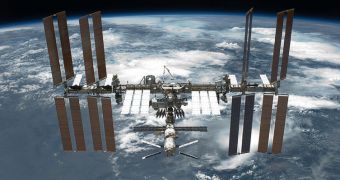An imminent threat from pass space debris forced the six members of Expedition 28 aboard the International Space Station (ISS) to take refuge aboard the two Russian-built Soyuz space capsules that act as lifeboats for the crew.
Mission Control announced that an important piece of space junk was on its way to the station, and that it may hit the recently-completed, $100 billion facility. This would have posed a significant hazard for astronauts, as a hole in the hull may have depressurized the station.
Experts at NASA and the Russian Federal Space Agency (RosCosmos) preferred to err on the side of caution, and ordered the astronauts to safety. The time of closest approach between the station and the space debris was clocked at 8:08 am EDT (12:08 UTC) today, June 28.
Monitoring stations on the ground determined that the object would fly within less than 243 meters (800 feet) of the ISS, well inside the pizza box-like security area that surrounds the orbital facility.
After the object zipped past, and Mission Control was assured that no collision had occurred, the six astronauts were finally allowed to return to their posts, and to resume their normal operations.
According to an announcement made some time ago by Nicholas L. Johnson, the chief scientist for Orbital Debris at NASA, the ISS is endangered by runaway pieces of space junk about three times per month, and mission controllers need to keep an eye on each of these situations.
He explained during an interview with Universe Today that a conjunction between the ISS and a piece of space junk is considered to be “close” only when the object enters the pizza box-like enclosure.
This imaginary area covers 750 meters above and below the station, and 25 kilometers (15.6 miles) on either side. These are the limits beyond which the behavior of space junk becomes unpredictable.
According to Johnson, the ISS has thus far been impacted by numerous pieces of space debris, but most of them were too small to cause any real damage. “The dedicated debris shields on ISS can withstand particles as large as 1 [centimeter] in diameter,” the official explained.
Whenever such an emergency occurs, the crew heads for the two Soyuz space capsules that are always attached to the station. Soyuz TMA-21 and Soyuz TMA-02M are the current spacecraft on the ISS.

 14 DAY TRIAL //
14 DAY TRIAL //